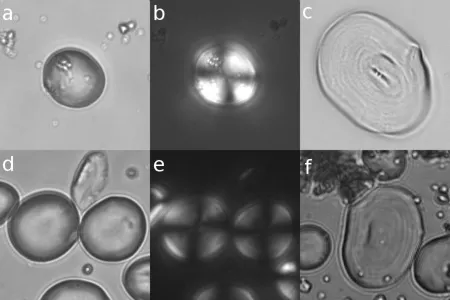Neanderthals Noshed on Plants—and Cooked?
/https://tf-cmsv2-smithsonianmag-media.s3.amazonaws.com/filer/20110520090223Henry-Brooks-and-Piperno-Fig-S1-resize.jpg)
Neanderthals and modern humans coexisted in Europe between 44,000 and 30,000 years ago and perhaps in the Middle East even earlier, between 100,000 and 60,000 years ago. But, ultimately, it was the modern humans that survived, while the Neanderthals died out.
To better understand the extinction of Neanderthals, Dolores Piperno, senior scientist and curator of archaeobotany and South American archaeology at the National Museum of Natural History, asked a question that has been on a lot of anthropologists' minds: "Were humans more sophisticated about the food quest in ways that allowed them to more efficiently capture food or capture kinds of foods and calories that Neanderthals couldn't?"
One popular view is that Neanderthals were largely carnivorous, eating big game, while modern humans had a more diversified diet, including marine resources, small animals and plant foods. But a recent study by Piperno and her colleagues, published in the Proceedings of the National Academy of Sciences, provides ammo for an argument that Neanderthals were gatherers, as well as hunters. "What we showed," says Piperno, "was that Neanderthals exploited, in part, the same kinds of plants that modern humans would come to exploit."

So, how did they prove it? Piperno has been honing a method to study the diets of early humans from the food particles preserved in calculus, a type of plaque buildup, on fossilized teeth. So, once she and her colleagues decided on seven Neanderthal teeth—three found in Shanidar Cave in Iraq and in the Smithsonian's collection, and four from Spy Cave in Belgium housed at the Institute Royal des Sciences Naturalles de Belgique—they got to work. In the plaque, they found starch grains from wild grass, legumes, roots, tubers, palm dates and other plants they have yet to identify. Also, some of the grains showed signs of having been chemically altered. For comparison's sake, the researchers did some experimental cooking with some of the same grains, collected from the National Herbarium at the Natural History Museum and other sources. What they concluded was that Neanderthals did, in fact, cook some of the plants, and, as the study states, invested "time and labor in preparing plant foods in ways that increased their edibility and nutritional quality."
To use plant resources, Neanderthals had to have had a handle on the appropriate times of year to harvest, says Piperno. The finding raises other questions about their behavior as well. Were Neanderthals practicing some kind of division of labor, as modern humans did, with women gathering and men hunting? "If evidence of plant exploitation as we demonstrated continues to build," she says, "I think we're going to have to consider that factor."
According to Piperno, no single scenario, like diet, is going to explain how modern humans outcompeted Neanderthals. "This is a single study like this," she adds, "and I think other people now will do this work, look at other Neanderthal fossils and look at other time periods when Neanderthals occupied Europe and Asia."
/https://tf-cmsv2-smithsonianmag-media.s3.amazonaws.com/accounts/headshot/megan.png)
/https://tf-cmsv2-smithsonianmag-media.s3.amazonaws.com/accounts/headshot/megan.png)